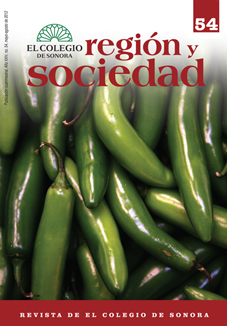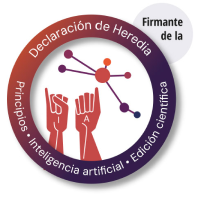 |
 |
 |
 |
 |
 |
 |
 |
 |
 |
 |
 |
Abstract
Mexico needs to reverse its decapitalization, and to do this, the government must develop strategies for generating and saving foreign currency. It should not insist on policies that exacerbate the balance of payments problem, nor invent economic activities the states do not have capacity for, but rather build institutional capacities within the various sectors of states' economies, such as those linked to the exploitation of its natural resource base, until they can be scaled up to industrial production. Furthermore, that escalation must be a process which corrects gaps and flaws in order to nurture the primacy of an exportable primary good. Aquaculture is one of the most promising activities and one of the main sources of rural employment and foreign currency in other parts of the developing world. Therefore, Mexico, with its extensive coastline, must reward any initiative that allows mastering aquaculture technology for subsequent commercial development.
References
ACRDP. 2005. Strategic Review of the Aquaculture Collaborative Research and Development Program, 2005. Fisheries and Oceans Canada. www.dfo-mpo.gc.ca/science/enviro/aquaculture/acrdp-pcrda/strateg-eng.htm (15 de marzo de 2010).
ADB. 2006. Proponed Loan. Republic of Indonesia: Sustainable Aquaculture Development for Food Security and Poverty Reduction Project. Project number 35183. www.adb.org/Documents/RRPS/INO/35183-INO-RRP.pdf (31 de enero de 2010).
Asociación AIDA. Ayuda, Intercambio y Desarrollo. Mejora de la producción acuícola de la zona costera norte de Vietnam. www.ongaida.org/doc/prod_acui_norte.pdf (febrero de 2010).
Berger, C. 2000. Aportes de la bio-tecnología a la alimentación y a la inmuno-estimulación de camarones peneidos. En Avances en nutrición acuícola. Memorias del V Simposium internacional de nutrición acuícola, editado por L.E. Cruz Suárez, Marie Ricque, M. Tapia, M.A. Olvera y R. Civera, 102-110. Monterrey: UANL. www.nutricionacuicola.uanl.mx/5/berger.pdf (1 de diciembre de 2009).
Bustelo, P., e Y. Fernández Lommen. 1996. Gradualismo y factores estructurales en la reforma económica china (1978-1995). En Documentos de trabajo de la Facultad de Ciencias Económicas y Empresariales, no. 11, Universidad Cumpletense de Madrid, España. www.ucm.es/BUCM/cee/doc/0036/03010036.htm (8 de noviembre de 2009).
Casas, R., J. Dettmer, L. Celis y C. Hernández. 2007. Redes y flujos de conocimiento en la acuacultura mexicana. Redes 13 (26): 111-144. http://redalyc.uaemex.mx/redalyc/src/inicio/Art-PdfRed.jsp?iCve=90702608.
Claro, S. 2003. 25 años de reformas económicas en China: 1978-2003. En Estudios Públicos. 91: 261-292. www.cepchile.cl/dms/lang_1/doc_3216.html
Comisión Europea. 2009. Los subastadores se reagrupan. Pesca y Acuicultura en Europa, Dirección General de Asuntos Marítimos y Pesca 43, abril: 9. www.ec.europa.eu/fisheries/publications/magaz/fishing/mag43_es.pdf
CONAPESCA. 2008a. Diagnóstico y planificación regional de la pesca y acuacultura en México. www.conapesca.sagarpa.gob.mx/wb/cona/pro-grama_rector_nacional_de_pesca_y_acuacultura (11 de marzo de 2010).
----------. 2008b. Anuario estadístico de acuacultura y pesca 2008. Comisión Nacional de Acuacultura y Pesca. Mazatlán, Sinaloa, México. (http://www.conapesca.sagarpa.gob.mx) (6 de septiembre de 2010).
CONICYT. Últimos días para postular a nueva convocatoria del programa: Hacia una Acuicultura de Nivel Mundial del CONICYT. (www.conicyt.cl/573/article-30578.html)(8 de agosto de 2008).
FAO. 2008. Oportunidades para superar los desafíos en satisfacer creciente demanda por pescado de acuicultura. Cuarta sesión, Comité de Pesca/Subcomité de Acuicultura, Puerto Varas (Chile), 6-10 de octubre. www.aquahoy.com/index.php?option=com_contend&id=5833%3Aoportunidadex-para-superar-los-desafios-en-satisfacer-creciente-demanda-por-pescado-de-acuicultura-&catid=56&lang=pt
----------. 2007. América Latina y el Caribe. Entornos favorables para el desarrollo del sector agroindustrial. Oficina Regional para América Latina y el Caribe/Dirección de Sistemas de Apoyo a la Agricultura, Chile. www.smye.info/gia-mexico/wp-content/uploads/2010/07/12_EFDSAAL.pdf.
----------. 2001. Report of the Conference on Aquaculture in the Third Millenium, Bangkok. Fisheries Report No. 661. FIRI/R661. www.fao.org/DOCREP/005/Y2815E/y2815eoo.htm (3 de mayo de 2009).
----------. 1999. Trickle Down System (TDS) of Aquaculture Extension for Rural Development, Regional Office for Asia and the Pacific, RAP Publication 1999/23. Bangkok. www.fao.org/docrep/003/X6946E/x6946e00.htm (8 de febrero de 2010).
----------. 1997. The Success of UNDP/FAO Project VIE/93/001 Freshwater Fish Culture Extension. Aquaculture Newsletter –FAN-, August 16:28. ftp://ftp.fao.org/docrep/fao/005/w6154e/w6154e00.pdf (23 de abril de 2009).
----------. 1989. Planificación del desarrollo de la acuicultura, UNDP/FAO, Roma. www.fao.org/docrep/T5728E/t5728eoo.htm (6 de marzo de 2009).
----------. 1984. Programa de Desarrollo y Coordinación de la Acuicultura. ADCP/REP/83/20-Planificación del Desarrollo de la Acuicultura. http://www.fao.org/docrep/x5743s/x5743s00.htm (23 de abril de 2009).
----------. s/f. Global Aquaculture Production. http://www.fao.org/fishery/statistics/global-aquaculture-production/query/en (20 de diciembre de 2010).
Feng, H. 1999. Agricultural Development in the Netherlands: An Analysis of the History of Dutch Agricultural Development and its Importance for China. LEI/The Hague, p. 104. www.lei.wur.nl/publicaties/PDF/1999/5_XXX/5_99_06.pdf. (15 de junio de 2010).
FIDA. 2006. República Popular de Bangladesh. Documento sobre oportunidades estratégicas nacionales, Junta Ejecutiva-87 periodo de sesiones, Roma, 19 y 20 de abril, p. 40. www.ifad.org/gbdocs/eb/87/s/EB-2006-87-R-9.pdf (28 de junio de 2010).
FIRA. 2009. Informe de actividades 2009. http://www.fira.gob.mx
FONDEF. 2008. Concurso de proyectos 2008, programa: Hacia una Acuicultura de Nivel Mundial (HUAM). https://gestion.conicyt.cl/postulacion/ur/fondef/huam/3/static_sitio/index.html#
Frissell, C., G. Oosterhout y C. Huntington. 2004. Scientists Say Real Salmon Recovery Depends on Improving Freshwater Habitat: Federal Hatchery Policy Plays Politics with Salmon Science. Pacific Rivers Council. http://www.pacificrivers.org/about/press/releases/scientists-say-real-salmon-recovery-depends-on-improvingfreshwater-habitat-federal-hatchery-policy-plays-politics-withsalmon-science (25 de agosto de 2008).
Fundación Centro Tecnológico de Acuicultura de Andalucía. www.ctaqua.es (21 de febrero de 2010).
Gylfason, T. 2004. Natural Resources and Economic Growth: From Dependence to Diversification. Trabajo presentado en el taller Sustainable Economic Liberalization and Integration Policy: Options for Eastern Europe and Russia, organizado por European Institute for International Economic Relations (AIIW)/University of Wuppertal, Alemania y Bruselas. www.cer.ethz.ch/resec/sgvs/029.pdf (6 de junio de 2008).
Hasan, M. R. 2005. Use of Feed and Fertilizer for Sustainable Aquaculture Development. FAO Aquaculture Newsletter 34 ftp://ftp.fao.org/docrep/fao/008/a0435e/A0435E02.pdf (16 de abril de 2009).
Hishamunda, N., y R. P. Subasinghe. 2003. Desarrollo de la acuicultura en China. Función de las políticas del sector público, FAO/ Departamento de Pesca, documento técnico de pesca 427. www.fao.org/DOCREP/006/Y4762S/Y4762S00.htm (16 de octubre de 2009).
Hu, V. 2005. La reforma económica china y la creación de empresas en China. Ponencia presentada en la X Jornada d`Economia caixa Manresa l`espirit emprendedor, Caixa Manresa/FUOC. www.uoc.edu/symposia/caixa-manresa/jornadaeconomia/2005/esp/vicky_hu.pdf (19 de mayo de 2009).
Iizuka, M. 2004. Organizational Capability and Export Performance: The Salmon Industry in Chile. Paper to be presented at the DRUID Winter Conference, 22-24 January, 2004, SPRU/Science & Technology Policy Research/University of Sussex. www.salmonchile.cl/files/Iizuka.pdf.
Infante, V. R. 2008. Industria del salmón en Chile: un ejemplo de innovación, Salmón Chile A.G. http://200.9.100.74/Rodrigo%20Infante.pdf
Kay, C. 1998. Estructuralismo y teoría de la dependencia en el periodo neoliberal. Una perspectiva latinoamericana. Nueva Sociedad 158: 100-119.
Kleiss, M. E. 2005. The Salmon Hatchery Myth: When Bad Policy Happens to Good Science. Minnesota Journal of Law, Science & Technology 6 (1): 433-443.
Labarta, U. 2007. El desarrollo de la acuicultura en España. Arbor Ciencia, Pensamiento y Cultura CLXXXIII (727): 669-685.
Luna Sotorrío, L., José María Fernández y Fernando González. 2006. El mercado de lubina y dorada en la UE en el periodo 2003-2006, Universidad de Cantabria/Gobierno de España. www.innovamar.org/descargas/sectorial/Pesca%20y%20Acuicultura/Informe%20Mercado%20Dorada%20y%20Lubina%202003%202006.pdf (27 de agosto de 2010).
Moguillansky, G. 2005. La importancia de la tecnología de la información y la comunicación para las industrias de recursos naturales. Comisión Económica para América Latina, serie Desarrollo Productivo no. 164: 39. www.eclac.org/publicaciones/xml/9/23149/lc164.pdf. (23 de abril de 2007).
NACA y Asean Fundation. 2008. Strengthening Capacity of Small Holder ASEAN Aquaculture Farmers for Competitive and Sustainable Aquaculture, Bangkok. http://library.enaca.org/inland/reports/asean_project_workship.pdf (3 de octubre de 2010).
ONU. 2006. A Case Study of the Salmon Industry in Chile. United Nations, Conference of Trade and Development. Transfer of Technology for Successful Integration into the Global Economy. www.unctad.org/en/docs/iteiit200512_en.pdf (23 de julio de 2009).
Panorama Acuícola. 2008. Informe del mercado de tilapia. www.panoramaacuicola.com/reportes_de_mer-cado/2008/10/17/informe_del_mercado_de_tilapia_septiembre_2008_.html
Prieto, M., F. Castaño, J. Logato y P Botero. 2006. Alimento vivo en larvicultura de peces marinos: copépodos y mesocosmos. Revista MVZ Córdoba 11 (suplemento 1): 30-36.
Reantaso M. 2005. Freshwater Seed as Global Resource for Aquaculture. FAO Aquaculture Newsletter 34 (diciembre). www.fao.org/docrep/009/a0435e/A0435E09#ch9.
Rodrik, D. 2005. Políticas de diversificación económica. Revista de la CEPAL (87): 7-23.
SAGARPA. 2008. Anuario estadístico de pesca 2008. http://www.conapesca.sagarpa.gob.mx/wb/cona/cona_anuario_estadistico_de_ pesca.
Selock, S. 1993. Choosing an Organizational Structure for Your Aquaculture Business. Fisheries Research Laboratory, Southern Illinois, University-Carbondale. http://extension.missouri.edu/ex-plore/miscoubs/mx0394.htm.
Soto, R., y F. Morandé. 1999. Reformas económicas en Chile: una perspectiva institucional. Fondo Nacional de Desarrollo Científico y Tecnológico, p. 94, Santiago de Chile. www.economiaynegocios.uahurtado.cl/pdf/publicaciones/inv121.pdf.
Tveteras R. 2006. The Future of Fishing and the Seafood Industry. Ponencia presentada en International Fishmeal and Fish Oil Organisation. Annual Conference, Barcelona. www.powershow.com./view/139119-Njc2M/The_future_of_fishing_and.
UNCTAS/OMC. 2008. Exportar productos pesqueros a la Unión Europea. Export Quality Boletín 84 (agosto): 34. www.globefish.org/files/EQ84%20Como%20Exportar%20Productos%20Pesqueros_679.pdf.
Vage, K. 2005. El desarrollo de la salmonicultura en Chile entre 1985-2000. Tesina Universitet I Bergen. http://ub.uib.no/elpub/2005/h/529001/Masteroppgave.pdf.
Vélez, M. A. 2002. Producción de alimento vivo para hatchery de peces marinos. Conferencia Internacional Aqua Sur. www.aqua-sur.cl/conferencias/Antonio%20Velez.pp.
Wiefels, R. 2003. Consumo de pescado y estrategias de comercialización para los productos acuícolas. Infopesca Internacional 16. www.infopesca.org/articulos/art10.pdf (27 de marzo de 2009).
Wang, Y. 2001. China P. R.:A Review of National Aquaculture Development. En Aquaculture in the Third Millenium.Technical Proceeding of the Conference on Aquaculture in the Third Millenium, editado por R. P. Subasinghe, P. Bueno, M. J. Phillips, C. Hough, S. E. McGladdery y J. R. Arthur. NACA/FAO, p.147. www.fao.org/DOCREP/003/AB412E/AB412E00.htm (24 de febrero de 2008).
Zhiwen, S. 1997. A Review of Aquaculture Extension Services in the People's Republic of China. Bangkok: Regional Office for Asia and the Pacific Publication 1997/34. www.fao.org/DOCREP/005/AC804E/AC804E00.htm (6 de mayo de 2009).
Open access policy
The authors who publish in región y sociedad accept the following conditions:
In accordance with the copyright laws, región y sociedad recognizes and respects the authors’ moral rights, as well as the ownership of property rights, which will be transferred to the journal to disseminate the articles in open access. región y sociedad does not charge the authors for submitting and processing articles for publication.
All the texts published by región y sociedad —with no exception— are distributed under a Creative Commons license 4.0 Attribution – Noncommercial (CC BY-NC 4.0 International), which allows third parties to use the publication as long as they mention the works’ authorship and the first publication in this journal.
The authors can enter into independent and additional contractual agreements for the nonexclusive distribution of the version of the article published in región y sociedad (for instance include it into an institutional repository or publish it in a book) as long as they clearly indicate that the work was published for the first time in región y sociedad.
For all the above, the author(s) must send the Letter of transfer of property rights of the first publication duly filled in and signed by the author(s). This letter can be sent by e-mail as a PDF to: region@colson.edu.mx






